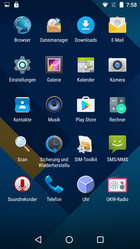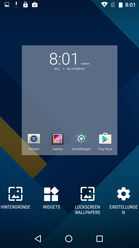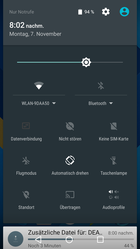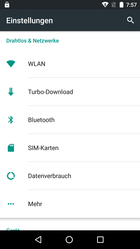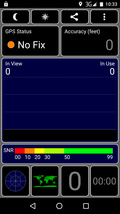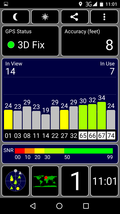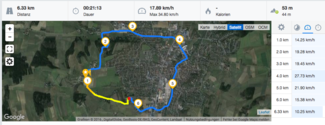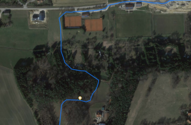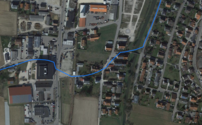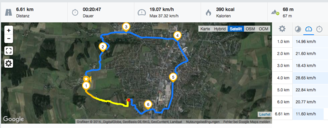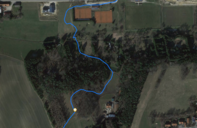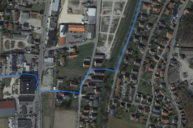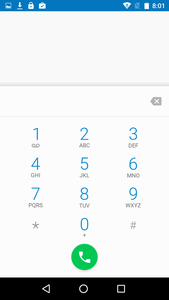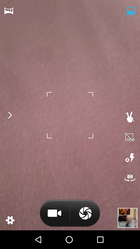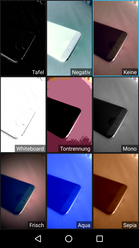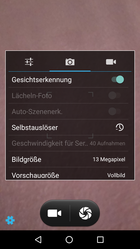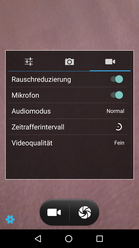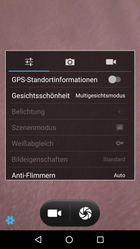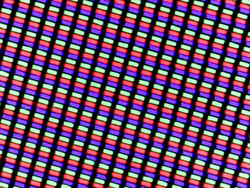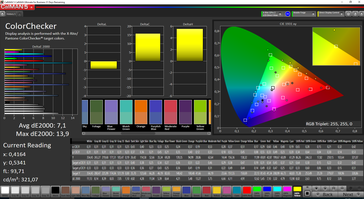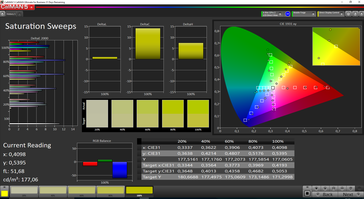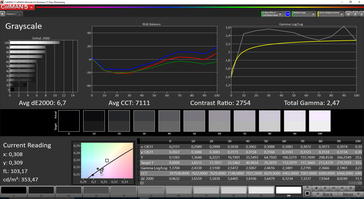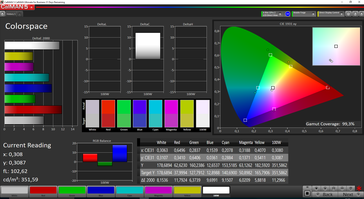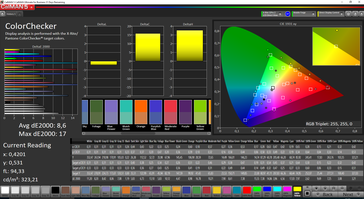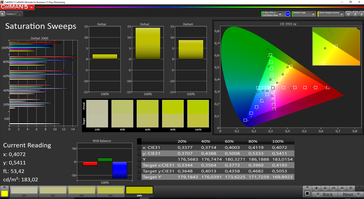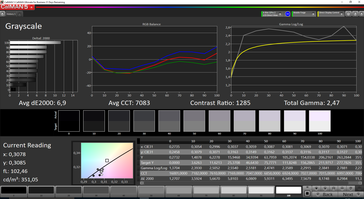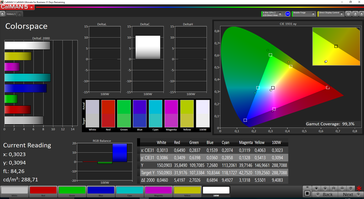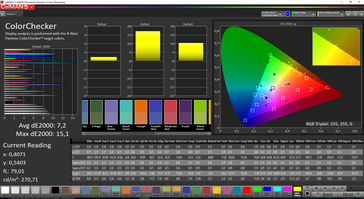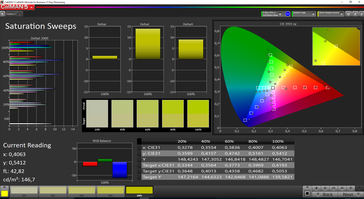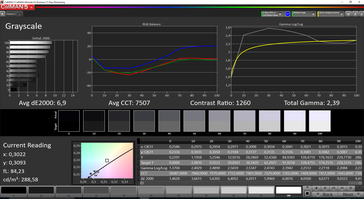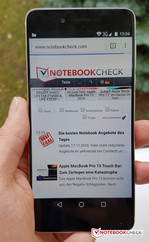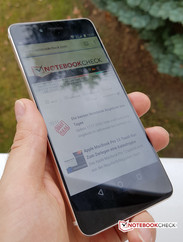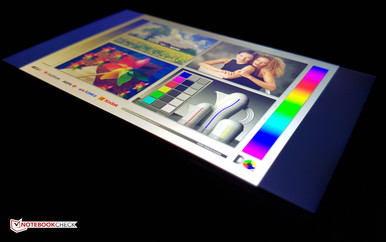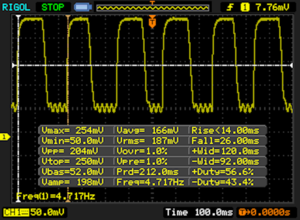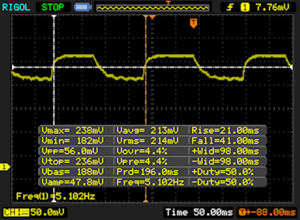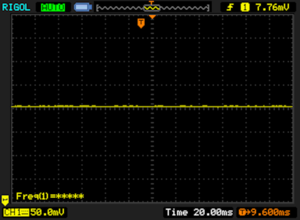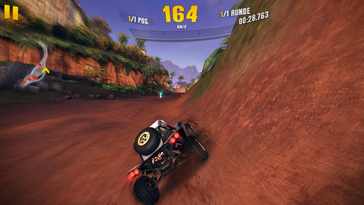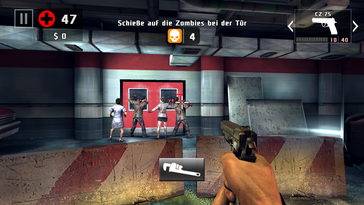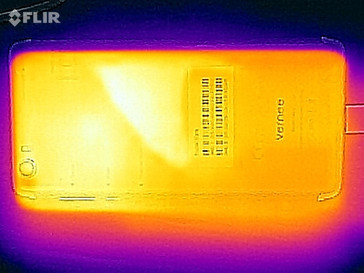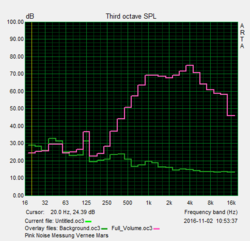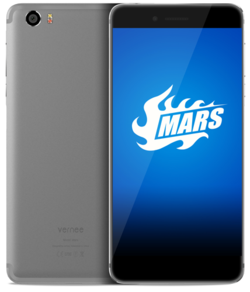Vernee Mars Smartphone Review
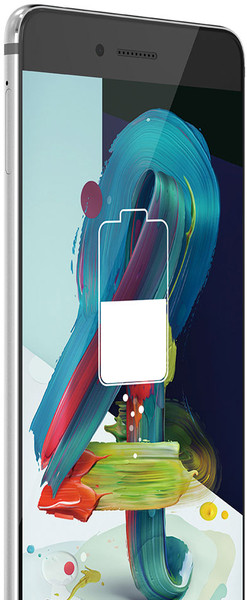
For the original German review, see here.
The smartphone label Vernee, relatively unknown in Germany, expands its portfolio by another 5.5-inch mid-range handset with its Mars model. Its narrow display edges make it quite compact with a size of 151 x 73 millimeters. The unibody casing and antenna strips on the back's upper and lower areas are very like the design of this year's Apple iPhone models.
The configuration for such an affordable mid-range smartphone is appealing at a street price of approximately 190 Euros (~$201) via importers (more information about importing smartphones can be found here). In addition to a Helio P10 processor, 4 GB of RAM, and a 13 MP camera including Sony's EXMOR sensor, Vernee's Mars also features a fingerprint scanner. It is also possible to expand the internal storage via an SD card or insert a second SIM card.
In addition to importing via importers, Vernee's Mars can also be purchased via "Vernee Germany" based in Kassel (280 Euros, ~$296). The company takes over responsibility for warranty, service, and support for the handsets sold via its online platform. However, it is not an official German representative of the Chinese manufacturer.
Potential rivals from this price range and also comparison devices listed in the test are Acer's Liquid Zest Plus, Coolpad's Modena 2, UMi's Max, Honor's 5C, Lenovo's Moto G4 Play, and ZTE's Blade V7 Lite.
Case
Vernee's Mars is made of a unibody aluminum casing that is available in two colors: gold and gray. The just 7.6-millimeter mid-range smartphone is nice to hold and makes a high-quality build impression. The stability is also very good; even firm pressure hardly has an impact on the handset.
A lightly curved 2.5D glass front protects the 5.5-inch screen in Vernee's Mars. It is scratch-resistant Corning Gorilla Glass 3. Thanks to the display's lateral edges of only 2 millimeters (measured), the screen-surface ratio is a good 75.5%.
The metal keys for volume control and power on the casing's right are easy to reach, hardly rock, and they have a pleasant pressure point. The physical keys can be discerned well thanks to their different surface structure. A fingerprint scanner is situated below the controls, which is a similar positioning as in some Sony devices.
The build quality and choice of materials of Vernee's smartphone are on a very good level for the price range, and they do not give much reason for complaint.
Connectivity
The internal eMMC storage (5.0) has a capacity of 32 GB. The user only has 25.1 GB available in delivery state. A micro-SD card can be integrated into the internal storage or compatible apps can be moved to the storage card (App2SD). The installed micro-SD card slot thus supports the latest SDHC and SDXC standards and accepts cards with a capacity of up to 128 GB.
The strong 3000 mAh battery in Vernee's Mars is recharged via the modern USB-C port on the handset's lower edge using Quick-Charge Technology. However, transmitting data via the micro-USB port is performed in the 2.0 standard.
Wi-Fi Direct and Miracast are present for wireless video content transmissions. An FM radio, dual-SIM functionality, fingerprint scanner, and LED for incoming notifications are also installed.
| SD Card Reader | |
| maximum SDCardreader Maximum Transfer Rate | |
| average SDCardreader Average Transfer Rate |
Software
Vernee relies on the sixth generation of Android Marshmallow for its Mars smartphone model. It was shipped with the security patch from April 2016 at test time. The manufacturer covers it with its own user interface dubbed V-OS. The system interface looks only slightly modified compared with stock Android.
Vernee has announced an update to Android 7 Nougat for the Mars. This should make the mid-range handset the first Helio 10-powered smartphone that uses the newest OS version.
Communication and GPS
Vernee's Mars uses LTE Cat.4 (150 Mbit/s downstream, 50 Mbit/s upstream) in the frequencies 800, 900, 1800, 2100, and 2600 MHz for connecting to mobile Internet. Consequently, the important LTE Band 20 for the rural areas of Germany is also supported. In contrast to many other smartphones, the dual-SIM smartphone's hybrid slot is not restricted to GSM speed when connecting to mobile Internet.
The integrated Wi-Fi module in the Mars supports the IEEE 802.11 a/b/g/n standard, thus it not only transmits in the 2.4 GHz frequency range but also in the 5 GHz frequency range. Both its range and signal stability are very good. The Wi-Fi transmission rates of 82 Mbit/s (iperf server) and 39 Mbit/s (iperf Client) between the smartphone and our Linksys EA 8500 reference router are on a low standard. However, other devices from this price range do not do a much better job in our Wi-Fi test.
| Networking | |
| iperf Server (receive) TCP 1 m | |
| Vernee Mars | |
| Honor 5C | |
| Acer Liquid Zest Plus | |
| Lenovo Moto G4 Play | |
| iperf Client (transmit) TCP 1 m | |
| Honor 5C | |
| Acer Liquid Zest Plus | |
| Lenovo Moto G4 Play | |
| Vernee Mars | |
The GPS module in Vernee's Mars slowly yet reliably finds the present position with an accuracy of three meters. To evaluate the localization capabilities of our review sample in practice, we record a route with Garmin's Edge 500 GPS bike computer and the smartphone simultaneously for comparison. Roughly 280 meters separates the mid-range smartphone and the professional device at the end of the 6-kilometer route. This is due to minor inaccuracies of Vernee's Mars - the accuracy of the smartphone's GPS module is average in total.
Telephone and Call Quality
The call quality of Vernee's Mars is good, and we did not experience annoying disruptions or reception issues in the test. Voices are transmitted clearly, and our contact also characterized voice transmission as intelligible.
The phone app corresponds to the stock Android 6.0 design. Besides a quick-dial function, the application also has a call list and direct access to saved contacts.
Cameras
The 13 MP primary camera in Vernee's Mars has a resolution of 4224x3136 pixels in an aspect ratio of 4:3. The camera module has an aperture of f/2.0, and the installed image sensor comes from Sony (IMX 258). This CMOS sensor by the Japanese manufacturer is also used, for example, in Sony's Xperia XA.
The camera module provides bright, color-accurate photos with sufficient image sharpness in good light conditions. As usual for the price range, an optical image stabilizer is not installed. However, the photos of Vernee's Mars quickly blur even without OIS (see scene screenshots). It is quite possible to shoot good quality photos when holding the rear-facing camera long enough (see sample photos: woods). The blurriness is maintained in the lateral areas, though. Sony's sensor produces bright photos with very evident image noise and low sharpness in low-light conditions so that details are hardly visible.
The front-facing camera has a resolution of up to 5 MP (Samsung S5K5E2) and an aperture of f/2.2. The photo quality is satisfactory for the price range - but the photos also blur marginally and their reproduction is also hazy. Videos can be recorded with up to 1080p at 30 FPS. The recording quality decreases to 720p at 30 FPS using the 5 MP front-facing camera.
Accessories and Warranty
Besides the smartphone, the review sample's box contained a wooden cradle, user's manual, USB cable, and a 10-watt modular power supply (5 V, 2A).
A 12-month warranty is included.
Input Devices and Handling
Vernee uses onscreen navigation in the screen's lower-third for its mid-range model. The capacitive touchscreen detects up to 10 fingers at a time and has a gliding-friendly surface. The multi-touchscreen responds very accurately up into the screen's edges.
The Chinese manufacturer preloads Google's stock Android keyboard for text inputting.
Biometric authentication via fingerprint can be used for unlocking Vernee's Mars. However, the active fingerprint scanner is below the physical keys on the side, making it more of a "nice to have feature" than a useful component, especially since attempts to unlock it via fingerprint failed in 70 to 80% of cases. The scanner does not provide any additional features.
Display
The LCD screen in Vernee's Mars has a diagonal of almost 14 centimeters (5.5-inches) and offers a Full HD resolution (1920x1080 pixels). This results in a pixel density of approximately 401 PPI and content is thus displayed sharply.
The IPS panel achieves a maximum of 367 cd/m² in our brightness assessment - a sooner average rate that only ZTE's Blade V7 Lite undercuts in the comparison field. In conjunction with the very good black level (0.14 cd/m²), the handset offers a high contrast ratio of 2462:1. We measured a much lower 280 cd/m² in the screen brightness evaluation with equally distributed bright and dark areas (APL50). The black level then sinks marginally to 0.13 cd/m², which also reduces the contrast ratio to 2154:1. That is, however, still good.
| |||||||||||||||||||||||||
Brightness Distribution: 85 %
Center on Battery: 345 cd/m²
Contrast: 2464:1 (Black: 0.14 cd/m²)
ΔE ColorChecker Calman: 7.1 | ∀{0.5-29.43 Ø4.78}
ΔE Greyscale Calman: 6.7 | ∀{0.09-98 Ø5}
99.3% sRGB (Calman 2D)
Gamma: 2.47
CCT: 7711 K
| Vernee Mars IPS, 1920x1080, 5.5" | Lenovo Moto G4 Play IPS, 1280x720, 5" | ZTE Blade V7 Lite IPS, 1280x720, 5" | UMI Max IPS, 1920x1080, 5.5" | Honor 5C IPS, 1920x1080, 5.2" | Coolpad Modena 2 IPS, 1280x720, 5.5" | Acer Liquid Zest Plus IPS, 1280x720, 5.5" | Huawei Mate 9 IPS, 1920x1080, 5.9" | |
|---|---|---|---|---|---|---|---|---|
| Screen | -20% | -15% | 1% | -23% | -41% | -23% | 10% | |
| Brightness middle (cd/m²) | 345 | 412 19% | 312 -10% | 522 51% | 515 49% | 482 40% | 414 20% | 696 102% |
| Brightness (cd/m²) | 339 | 414 22% | 302 -11% | 498 47% | 498 47% | 468 38% | 420 24% | 680 101% |
| Brightness Distribution (%) | 85 | 94 11% | 79 -7% | 86 1% | 93 9% | 86 1% | 94 11% | 93 9% |
| Black Level * (cd/m²) | 0.14 | 0.42 -200% | 0.15 -7% | 0.23 -64% | 0.49 -250% | 0.63 -350% | 0.33 -136% | 0.42 -200% |
| Contrast (:1) | 2464 | 981 -60% | 2080 -16% | 2270 -8% | 1051 -57% | 765 -69% | 1255 -49% | 1657 -33% |
| Colorchecker dE 2000 * | 7.1 | 5.6 21% | 8.2 -15% | 6.9 3% | 6.2 13% | 6.5 8% | 8.1 -14% | 4.3 39% |
| Colorchecker dE 2000 max. * | 13.9 | 9.7 30% | 16.5 -19% | 12.3 12% | 11.4 18% | 12.4 11% | 13.8 1% | 9.4 32% |
| Greyscale dE 2000 * | 6.7 | 6.9 -3% | 9.2 -37% | 9.2 -37% | 7.4 -10% | 7.3 -9% | 9.6 -43% | 4.8 28% |
| Gamma | 2.47 89% | 2.4 92% | 2.29 96% | 2.38 92% | 2.28 96% | 1.91 115% | 2 110% | 2.33 94% |
| CCT | 7711 84% | 8422 77% | 9017 72% | 8687 75% | 8664 75% | 7249 90% | 7754 84% | 7255 90% |
* ... smaller is better
The analysis with a photospectrometer and CalMAN software shows the shift common for the price range in the standard color temperature, i.e. 7.1 in color and 6.7 in grayscale reproduction. The measured color temperature of 7711 Kelvin is slightly above the ideal rate of 6500 Kelvin.
Despite the mediocre brightness, the very good contrast ratio ensures good legibility outdoors as long as sunlight does not shine directly onto the screen. Vernee's Mars also does a good job with viewing-angle stability - colors do not invert thanks to the IPS panel and the reproduction barely changes in flatter viewing angles. We only observed minor backlight bleeding in our review sample.
Display Response Times
| ↔ Response Time Black to White | ||
|---|---|---|
| 40 ms ... rise ↗ and fall ↘ combined | ↗ 14 ms rise | |
| ↘ 26 ms fall | ||
| The screen shows slow response rates in our tests and will be unsatisfactory for gamers. In comparison, all tested devices range from 0.1 (minimum) to 240 (maximum) ms. » 97 % of all devices are better. This means that the measured response time is worse than the average of all tested devices (20.2 ms). | ||
| ↔ Response Time 50% Grey to 80% Grey | ||
| 62 ms ... rise ↗ and fall ↘ combined | ↗ 21 ms rise | |
| ↘ 41 ms fall | ||
| The screen shows slow response rates in our tests and will be unsatisfactory for gamers. In comparison, all tested devices range from 0.165 (minimum) to 636 (maximum) ms. » 97 % of all devices are better. This means that the measured response time is worse than the average of all tested devices (31.6 ms). | ||
Screen Flickering / PWM (Pulse-Width Modulation)
| Screen flickering / PWM not detected | |||
In comparison: 53 % of all tested devices do not use PWM to dim the display. If PWM was detected, an average of 8108 (minimum: 5 - maximum: 343500) Hz was measured. | |||
Performance
With the MT6755 Helio P10, Vernee installs a high-performance, mid-range processor. The MediaTek SoC (system-on-a-chip) is built in 28 nanometers and has eight CPU cores based on the 64-bit capable Cortex A53 architecture. The system is supported by 4 GB of LPDDR3 working memory and the ARM Mali T860 MP2 graphics unit.
The system runs smoothly in routine use and delays are rare. Vernee's Mars makes a convincing impression in the benchmarks and is at the top of the comparison field alongside the Honor 5C. Compared with the UMi Max powered by the Helio P10, Vernee's smartphone manages to retrieve a bit more power from MediaTek's SoC. The browser performance is both subjectively and objectively (benchmarks) very good for the price range and does not give any reason for complaint.
The measured read and write speeds of the internal eMMC storage of 256 MB/s and 72 MB/s are relatively high for an affordable mid-range handset. In contrast, the micro-SD card slot's access times that we test with our Toshiba Exceria Pro M401 reference card (max. 95 MB/s read and max. 80 MB/s write) are only average.
| AnTuTu v6 - Total Score (sort by value) | |
| Vernee Mars | |
| Lenovo Moto G4 Play | |
| ZTE Blade V7 Lite | |
| UMI Max | |
| Honor 5C | |
| Coolpad Modena 2 | |
| Acer Liquid Zest Plus | |
| Huawei Mate 9 | |
| Geekbench 3 | |
| 64 Bit Single-Core Score (sort by value) | |
| ZTE Blade V7 Lite | |
| Honor 5C | |
| 64 Bit Multi-Core Score (sort by value) | |
| ZTE Blade V7 Lite | |
| Honor 5C | |
| Geekbench 4.0 | |
| 64 Bit Multi-Core Score (sort by value) | |
| Vernee Mars | |
| UMI Max | |
| Coolpad Modena 2 | |
| Acer Liquid Zest Plus | |
| Huawei Mate 9 | |
| 64 Bit Single-Core Score (sort by value) | |
| Vernee Mars | |
| UMI Max | |
| Coolpad Modena 2 | |
| Acer Liquid Zest Plus | |
| Huawei Mate 9 | |
| GFXBench (DX / GLBenchmark) 2.7 | |
| T-Rex Onscreen (sort by value) | |
| Vernee Mars | |
| Lenovo Moto G4 Play | |
| ZTE Blade V7 Lite | |
| UMI Max | |
| Honor 5C | |
| Coolpad Modena 2 | |
| Acer Liquid Zest Plus | |
| Huawei Mate 9 | |
| 1920x1080 T-Rex Offscreen (sort by value) | |
| Vernee Mars | |
| Lenovo Moto G4 Play | |
| ZTE Blade V7 Lite | |
| UMI Max | |
| Honor 5C | |
| Coolpad Modena 2 | |
| Acer Liquid Zest Plus | |
| Huawei Mate 9 | |
| GFXBench 3.0 | |
| on screen Manhattan Onscreen OGL (sort by value) | |
| Vernee Mars | |
| Lenovo Moto G4 Play | |
| ZTE Blade V7 Lite | |
| UMI Max | |
| Honor 5C | |
| Coolpad Modena 2 | |
| Acer Liquid Zest Plus | |
| Huawei Mate 9 | |
| 1920x1080 1080p Manhattan Offscreen (sort by value) | |
| Vernee Mars | |
| Lenovo Moto G4 Play | |
| ZTE Blade V7 Lite | |
| UMI Max | |
| Honor 5C | |
| Coolpad Modena 2 | |
| Acer Liquid Zest Plus | |
| Huawei Mate 9 | |
| GFXBench 3.1 | |
| on screen Manhattan ES 3.1 Onscreen (sort by value) | |
| Vernee Mars | |
| ZTE Blade V7 Lite | |
| UMI Max | |
| Honor 5C | |
| Coolpad Modena 2 | |
| Acer Liquid Zest Plus | |
| Huawei Mate 9 | |
| 1920x1080 Manhattan ES 3.1 Offscreen (sort by value) | |
| Vernee Mars | |
| ZTE Blade V7 Lite | |
| UMI Max | |
| Honor 5C | |
| Coolpad Modena 2 | |
| Acer Liquid Zest Plus | |
| Huawei Mate 9 | |
| GFXBench | |
| 1920x1080 Car Chase Offscreen (sort by value) | |
| Vernee Mars | |
| UMI Max | |
| Honor 5C | |
| Huawei Mate 9 | |
| on screen Car Chase Onscreen (sort by value) | |
| Vernee Mars | |
| UMI Max | |
| Honor 5C | |
| Huawei Mate 9 | |
| PCMark for Android - Work performance score (sort by value) | |
| Vernee Mars | |
| Lenovo Moto G4 Play | |
| UMI Max | |
| Honor 5C | |
| Coolpad Modena 2 | |
| Acer Liquid Zest Plus | |
| Huawei Mate 9 | |
| Octane V2 - Total Score (sort by value) | |
| Vernee Mars | |
| Lenovo Moto G4 Play | |
| ZTE Blade V7 Lite | |
| UMI Max | |
| Honor 5C | |
| Coolpad Modena 2 | |
| Acer Liquid Zest Plus | |
| Huawei Mate 9 | |
| Mozilla Kraken 1.1 - Total (sort by value) | |
| Vernee Mars | |
| Lenovo Moto G4 Play | |
| ZTE Blade V7 Lite | |
| UMI Max | |
| Honor 5C | |
| Coolpad Modena 2 | |
| Acer Liquid Zest Plus | |
| Huawei Mate 9 | |
| JetStream 1.1 - Total Score (sort by value) | |
| Vernee Mars | |
| Lenovo Moto G4 Play | |
| ZTE Blade V7 Lite | |
| UMI Max | |
| Honor 5C | |
| Coolpad Modena 2 | |
| Acer Liquid Zest Plus | |
| Huawei Mate 9 | |
* ... smaller is better
Games
Up-to-date Android games, such as Dead Trigger 2 or Asphalt Xtreme, do not push the Mali T860 MP2 graphics unit in Vernee's Mars to its limit. The integrated position sensors and touchscreen's sensitivity function just as smoothly and allow accurate control.
Emissions
(+) The maximum temperature on the upper side is 37.2 °C / 99 F, compared to the average of 35.2 °C / 95 F, ranging from 21.9 to 247 °C for the class Smartphone.
(+) The bottom heats up to a maximum of 36.3 °C / 97 F, compared to the average of 34 °C / 93 F
(+) In idle usage, the average temperature for the upper side is 29.9 °C / 86 F, compared to the device average of 32.9 °C / 91 F.
Speaker
The speaker on the handset's lower edge is sufficiently loud for everyday use, but it is also sometimes less powerful than that of direct rivals (Honor 5C) with a maximum volume of 81 dB(A). The sound quality is not at all bad for the price range, but it is not very convincing, either. As expected, not very linear mids and trebles characterize the sound image. The Pink Noise diagram clearly illustrates that bass is virtually inaudible. The sound makes an overall unbalanced impression and gets tinnier as the volume gets higher.
Vernee Mars audio analysis
(±) | speaker loudness is average but good (81.2 dB)
Bass 100 - 315 Hz
(-) | nearly no bass - on average 29.4% lower than median
(-) | bass is not linear (15.8% delta to prev. frequency)
Mids 400 - 2000 Hz
(±) | higher mids - on average 8.5% higher than median
(±) | linearity of mids is average (10% delta to prev. frequency)
Highs 2 - 16 kHz
(±) | higher highs - on average 8.5% higher than median
(±) | linearity of highs is average (8% delta to prev. frequency)
Overall 100 - 16.000 Hz
(-) | overall sound is not linear (33.9% difference to median)
Compared to same class
» 84% of all tested devices in this class were better, 1% similar, 15% worse
» The best had a delta of 11%, average was 35%, worst was 134%
Compared to all devices tested
» 92% of all tested devices were better, 1% similar, 6% worse
» The best had a delta of 4%, average was 24%, worst was 134%
ZTE Blade V7 Lite audio analysis
(+) | speakers can play relatively loud (82.6 dB)
Bass 100 - 315 Hz
(-) | nearly no bass - on average 35.5% lower than median
(±) | linearity of bass is average (7% delta to prev. frequency)
Mids 400 - 2000 Hz
(±) | reduced mids - on average 5.1% lower than median
(±) | linearity of mids is average (8% delta to prev. frequency)
Highs 2 - 16 kHz
(+) | balanced highs - only 2.2% away from median
(+) | highs are linear (2.2% delta to prev. frequency)
Overall 100 - 16.000 Hz
(±) | linearity of overall sound is average (23.8% difference to median)
Compared to same class
» 54% of all tested devices in this class were better, 8% similar, 38% worse
» The best had a delta of 11%, average was 35%, worst was 134%
Compared to all devices tested
» 71% of all tested devices were better, 6% similar, 23% worse
» The best had a delta of 4%, average was 24%, worst was 134%
Honor 5C audio analysis
(+) | speakers can play relatively loud (87.9 dB)
Bass 100 - 315 Hz
(-) | nearly no bass - on average 30.9% lower than median
(±) | linearity of bass is average (8.1% delta to prev. frequency)
Mids 400 - 2000 Hz
(±) | higher mids - on average 7.1% higher than median
(±) | linearity of mids is average (8.8% delta to prev. frequency)
Highs 2 - 16 kHz
(±) | higher highs - on average 12.1% higher than median
(+) | highs are linear (2.9% delta to prev. frequency)
Overall 100 - 16.000 Hz
(-) | overall sound is not linear (31.7% difference to median)
Compared to same class
» 81% of all tested devices in this class were better, 2% similar, 16% worse
» The best had a delta of 11%, average was 35%, worst was 134%
Compared to all devices tested
» 90% of all tested devices were better, 2% similar, 8% worse
» The best had a delta of 4%, average was 24%, worst was 134%
Frequency diagram in comparison (checkboxes above can be turned on/off)
Energy Management
Power Consumption
The energy management of Vernee's Mars is somewhat inefficient compared with the competition. The power consumption is too high particularly in full load conditions and increases to almost 7 watts.
| Off / Standby | |
| Idle | |
| Load |
|
Key:
min: | |
| Vernee Mars 3000 mAh | Lenovo Moto G4 Play 2800 mAh | ZTE Blade V7 Lite 2500 mAh | UMI Max 4000 mAh | Honor 5C 3000 mAh | Coolpad Modena 2 2500 mAh | Acer Liquid Zest Plus 5000 mAh | |
|---|---|---|---|---|---|---|---|
| Power Consumption | 23% | 30% | 22% | 4% | 3% | 7% | |
| Idle Minimum * (Watt) | 1.02 | 0.68 33% | 0.63 38% | 1.02 -0% | 0.89 13% | 0.64 37% | 0.83 19% |
| Idle Average * (Watt) | 1.69 | 1.58 7% | 1.37 19% | 1.53 9% | 2.07 -22% | 1.96 -16% | 2.06 -22% |
| Idle Maximum * (Watt) | 1.82 | 1.61 12% | 1.71 6% | 1.62 11% | 2.15 -18% | 1.98 -9% | 2.08 -14% |
| Load Average * (Watt) | 4.39 | 3.36 23% | 2.82 36% | 2.91 34% | 3.46 21% | 4.99 -14% | 3.53 20% |
| Load Maximum * (Watt) | 6.79 | 3.91 42% | 3.36 51% | 2.93 57% | 5.18 24% | 5.48 19% | 4.49 34% |
* ... smaller is better
Battery Runtime
The non-removable battery has a nominative output of 3000 mAh. The mid-range device places itself clearly behind its rivals with 7 hours and 7 minutes in our Wi-Fi test using a brightness of 150 cd/m². Regardless of that, the achieved battery life is throughout satisfactory.
Recharging takes about 1.5 hours via Quick-Charge Technology.
| Vernee Mars 3000 mAh | Lenovo Moto G4 Play 2800 mAh | ZTE Blade V7 Lite 2500 mAh | UMI Max 4000 mAh | Honor 5C 3000 mAh | Coolpad Modena 2 2500 mAh | Acer Liquid Zest Plus 5000 mAh | |
|---|---|---|---|---|---|---|---|
| Battery runtime | |||||||
| WiFi v1.3 (h) | 7.1 | 10.5 48% | 8.6 21% | 9.8 38% | 9.7 37% | 8.6 21% | 13.6 92% |
Pros
Cons
Verdict
Vernee's Mars is a good-looking, very well-built smartphone. At a present street price of approximately 180 to 190 Euros (~$190 to ~$201, importers), the affordable mid-range handset provides an attractive price-performance ratio and scores with a high-resolution, high-contrast IPS panel, decent system performance, and a lush configuration.
In return, concessions have to be made in speaker quality (compared with rival models) and GPS performance. Furthermore, it is relatively difficult to produce useful photos with the 13 MP primary camera - an optical image stabilizer would have been a great advantage here.
Vernee's Mars is a good smartphone in the medium price range, but it lacks a real unique selling point - Honor's 5C with a very similar device profile, for example, is available for the same purchase price in Germany. This at least makes it doubtful whether importing it is worthwhile.
Vernee Mars
- 11/18/2016 v5.1 (old)
Marcus Herbrich








